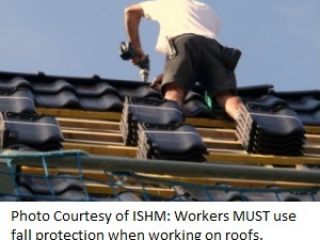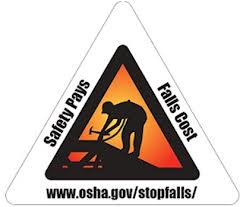Fall Protection Pre-Planning for Roofers
Pre-Planning for Fall Protection
Pre-planning is essential before construction processes begins. Pre-planning can impact profit and can be a powerful safety tool that can provide an injury-free workplace. Pre-Planning can occur at several different construction phases:
· Job start up
· As the job progresses
· When new trades are introduced
· For specific work tasks
· Bid stage
By preplanning you can determine what safety equipment will be needed on each job. Here are some practical questions to ask when preplanning for safety on a residential roofing job:
1) Have workers been trained in fall protection & ladders?
2) Are there multiple roof levels that will need to be accessed?
3) How high is the roof?
4) Is the pitch of the roof higher than normal? Will roof bracket scaffolds be needed to stand on?
5) Are the electrical service lines in the way of the workers? How will they be protected? Will the power need to be shut off at the street?
6) Are the roof anchors useable for this application? Different materials call for different anchors.
7) How many roof anchors will be needed to access all of the roof levels?
8) Can the work be sequenced in order to reduce the number of anchors needed at one time?
9) Can self Retractable Lifelines be used or will workers use rope & rope grab?
10) What length ladder will be needed?
11) Once on the roof will we need to use a ladder to access other roof levels?
12) Is there a chance the ladder could contact electrical lines?
13) Will gutters interfere with placing the ladder against the structure?
14) Where will materials be stored?
15) Where will we throw trash off of the roof? How will we protect the homeowner and workers from falling debris?
16) Are there other hazards associated with THIS JOB that we have not yet identified?
Answering these questions will help in the development of a fall protection plan. Always answer these questions when preplanning for safety. It is better to plan ahead, provide tools and materials, and train workers on situations that pose a risk to them; than to show up and try to do the work with no planning involved. Remember the 5 P's: "Proper Planning Prevents Poor Performance!"

